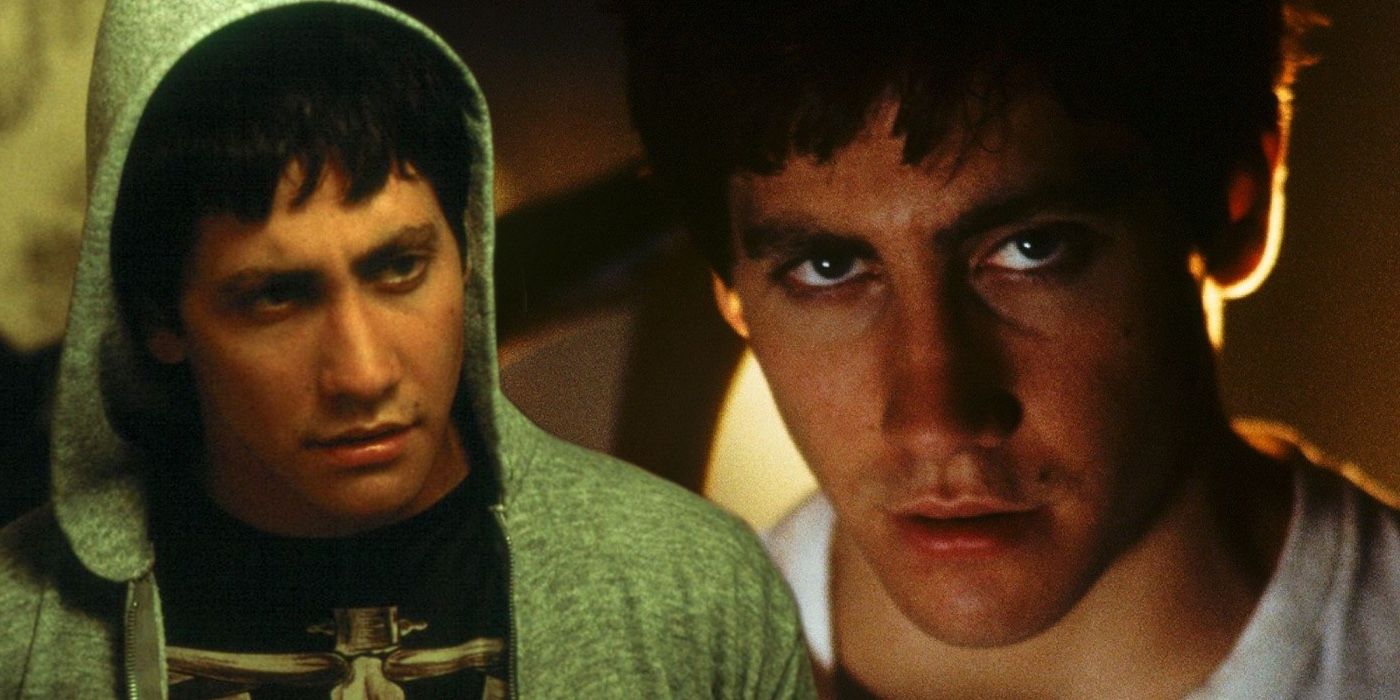
Great cinematic works have an undeniable power, possessing scenes that embed themselves in our collective memory forever. Whether these moments thrill us, provoke laughter, inspire new ways of thinking, or simply help us feel something profound, their impact is immense. From Indiana Jones narrowly escaping a giant boulder to the chilling shower scene in “Psycho,” these iconic sequences not only shape our viewing experience but often inspire new generations of filmmakers and storytellers.
Yet, even the most celebrated films in history sometimes feature scenes that are commonly misinterpreted. These aren’t necessarily flaws in the filmmaking, but rather moments whose implications are unclear, lines that feel ambiguous, or narrative choices that defy easy understanding. The sheer depth of masterful works by auteurs like Hitchcock, Scorsese, Spielberg, and the Coppolas means that some scenes are designed to resist a straightforward interpretation, leaving audiences to ponder and debate their true meaning.
This is where the magic of behind-the-scenes insights truly comes alive. Unpacking the creative intent, directorial choices, or even the accidental brilliance that shaped these moments can profoundly alter our understanding, transforming confusion into clarity and revealing layers we never knew existed. We’re about to embark on a fascinating journey through some of the most misunderstood movie moments in history, peeling back the layers to discover what the creators really wanted us to see and feel.

1. **Vertigo’s big twist isn’t the point of the film**Alfred Hitchcock’s “Vertigo” stands as a towering achievement in his extensive and influential filmography. The psychological thriller introduces us to John “Scotty” Ferguson, a former cop haunted by vertigo and a debilitating fear of heights, conditions that previously contributed to a workplace tragedy. Now retired from the force, Scotty finds himself drawn back into the world of investigation when an old friend, Gavin Elster, hires him to discreetly follow his wife, Madeleine, who seems to be in the thrall of a lookalike ancestor who met a tragic end.
As Scotty delves deeper, the truth unravels in a way that is far more bizarre than any initial suspicions could suggest. We eventually discover that a woman named Judy Barton was, in fact, impersonating the real Madeleine as part of an elaborate scheme to conceal a genuine murder. This revelation catapults Scotty into a relentless spiral of obsession, leading to an ending that, unsurprisingly, culminates in tragedy. In its initial release, “Vertigo” faced a mixed reception from some critics, largely due to Hitchcock’s controversial decision to reveal the ruse of Madeleine’s true identity surprisingly early in the film, a choice he himself reportedly deliberated over.
However, this early reveal should not, and indeed does not, diminish a viewer’s appreciation of the film’s profound depth. The big secret surrounding Madeleine’s identity is not the ultimate point of the narrative; rather, it serves as a critical turning point. What unfolds after this disclosure remains utterly captivating, shifting the film’s focus dramatically. “Vertigo” is not merely a tale of murder and intricate deception, but fundamentally a searing exploration of the devastating consequences of obsession, identity, and control.
The reveal is paramount, not for the shock value of the deception itself, but for its profound psychological effect on Scotty. It acts as the catalyst for his relentless pursuit to recreate Madeleine, illustrating his internal unraveling and descent into a dangerous, controlling fixation. Understanding this shifts the entire viewing experience, illuminating the film as a masterful study of psychological torment rather than a simple whodunit, and underlining Hitchcock’s genius in subverting conventional thriller expectations.

2. **Taxi Driver’s ending doesn’t glorify Travis Bickle, it criticizes us**Martin Scorsese’s monumental film “Taxi Driver” immerses its audience in the disquieting world of Travis Bickle, portrayed by Robert De Niro. Travis is a lonely, socially awkward, insomniac cab driver navigating the grimy, desolate streets of 1970s New York City. His profound isolation and growing disdain for the urban decay around him steadily build, foreshadowing an inevitable existential crisis that will consume him.
An attempt to forge a relationship with Betsy, a campaign aide, ultimately collapses, further destabilizing Travis’s fragile psyche. This personal failure propels him onto a misguided and increasingly extremist quest for purpose and meaning. Initially, his rage is directed towards a political candidate, culminating in a botched assassination attempt. When that mission fails, his focus shifts, becoming disturbingly fixated on “saving” 12-year-old prostitute Iris from her pimps, leading to the film’s infamous and ultraviolent climax.
In the aftermath of this explosive violence, Travis Bickle shockingly survives and is lauded as a hero by the public. This unexpected turn of events has led many viewers to misinterpret the film’s ending as a glorification of Bickle’s egregious behavior and his increasingly disturbing thoughts. This particular reading has, in turn, sparked criticism against Scorsese, with some accusing him of endorsing violent masculinity, while others even mistakenly believe Bickle dies at the end. Such interpretations, however, miss the film’s crucial, nuanced message.
While “Taxi Driver” deliberately places the audience in an uncomfortably close proximity to Travis Bickle’s deteriorating mental state, the narrative consistently and unmistakably depicts his descent into brutality, menace, paranoia, and moral anarchy, despite his penchant for trite, often contradictory, aphorisms. The film’s conclusion, where he is celebrated for his violent actions on Iris’s behalf, is by no means Scorsese’s endorsement of Bickle’s behavior. Instead, it serves as a scathing indictment: society, in its blindness or desperation, elevates a deeply troubled, possibly severely ill, man to the status of a hero. The ending, therefore, functions as a powerful criticism of society’s inability to discern true heroism from pathological violence, rather than a celebration of Bickle himself.

3. **Total Recall’s director has answered if the film and its ending are real or dreams**Paul Verhoeven’s “Total Recall” plunges us into the futuristic world of Douglas Quaid, a construction engineer played by Arnold Schwarzenegger, in the year 2084. Quaid is plagued by vivid, recurring dreams of Mars and a mysterious woman he encounters there. Despite stern warnings about the potential for lobotomies in some patients, he decides to visit Rekall, a controversial company specializing in memory implants to provide unique and fantastical simulated vacations. He chooses the “Blue Sky on Mars” program, opting for an added espionage element within his chosen package.
Upon receiving the implant, Quaid awakens to a world of bewildering intrigue and relentless conflict. He finds himself pursued by various factions, desperately attempting to piece together what is real and what is implanted fantasy. The entire film is meticulously crafted around a complex, multi-layered plot deliberately designed to keep the audience guessing about Quaid’s true identity – is he genuinely a secret agent thrust into a grand conspiracy, or is this all merely the incredibly convincing byproduct of Rekall’s immersive vacation experience? The ambiguity is central to the film’s enduring appeal.
The film culminates with Quaid on a Martian mountain, followed by what appears to be a bright flash of light just before the credits roll, leaving the character—and the audience—perpetually unsure whether he is living out a dream or finally experiencing reality. This enigmatic ending has fueled decades of spirited debate among fans, each convinced of their own interpretation. However, director Paul Verhoeven himself has definitively resolved the mystery, offering a clear, if unsettling, answer.
According to Verhoeven, the entirety of Quaid’s subsequent adventures, beginning with his “awakening” to a world of espionage, “is part of the dream… That’s the trick of the company, that they make a dream that’s so convincing that it seamlessly goes from the first reality into the second one.” This directorial clarification confirms that all the thrilling moments of Martian adventures, right up to the final flash, are indeed part of the manufactured dream. In this interpretation, that pseudo-optimistic burst of light at the end takes on a far darker implication: it may very well signify Quaid, still seated in the Rekall chair, unknowingly receiving the very lobotomy he was warned about, his mind forever lost in a manufactured heroic fantasy.

4. **The film version of Starship Troopers is satirical while the novel is not**Paul Verhoeven’s cinematic adaptation of “Starship Troopers,” based on Robert A. Heinlein’s renowned novel, thrusts humanity into a dedicated, brutal war against an organized, formidable army of extraterrestrial insects, ominously dubbed the “Bugs.” The human forces operate under the command of the United Citizen Federation, a society where full citizenship is not a birthright but must be earned through some form of military service. Their mission is clear: defeat the Bugs at any cost, a goal pursued with zealous fervor.
At face value, the film appears to be an unapologetically over-the-top celebration of military might and jingoistic patriotism. This is evident from its infamous classroom scenes, which espouse dogmatic views on war and civic duty, to a plethora of propaganda videos that intersperse the narrative, including a particularly notable segment discussing the “failure of democracy.” The film even boldly asserts that violence itself is “the supreme authority from which all other authorities are derived.” These elements have understandably led some viewers to interpret the film as endorsing Heinlein’s militaristic philosophy, a common and significant misunderstanding of Verhoeven’s true intentions.
However, this interpretation entirely misses the mark. Verhoeven’s “Starship Troopers” is explicitly crafted as a sharp satire, a deliberate sendup of the very military fetishization and fascistic undertones present in Heinlein’s original novel. The filmmaker has consistently and openly stated his satirical intent, explaining that the film’s exaggerated, over-the-top nature is precisely what communicates its critical stance. He went so far as to declare, “of course, we really, really tried to get away from the novel, because we felt that the novel was fascistic and militaristic.”
In essence, the film is not designed to endorse the more dogmatic, authoritarian elements of Heinlein’s novel but rather to lampoon them with an unflinching, cynical eye. It uses the guise of a blockbuster sci-fi action film to critique blind allegiance, propaganda, and the dangerous allure of fascism. Whether knowing this underlying satirical layer enhances the movie’s watchability or detracts from it is, ultimately, a matter of personal taste, but the clarification fundamentally reframes the entire viewing experience from a literal war epic to a biting social commentary.

5. **Fight Club isn’t celebrating attempts to find meaning through violent masculinity**David Fincher’s “Fight Club,” adapted from Chuck Palahniuk’s novel, introduces us to its unnamed Narrator, a mild-mannered yet profoundly unhappy and insomniac office worker. Desperate to feel anything at all, he seeks solace in group therapy sessions. There, he encounters the enigmatic Marla and, more significantly, the dangerously charismatic Tyler Durden. Durden becomes a catalyst, introducing the Narrator to the clandestine world of Fight Club, a gathering of disaffected men who reject societal norms and express themselves through raw, brutal combat. What begins as an outlet for primal aggression soon devolves into a cesspool of angry masculinity, escalating into something far more perilous.
One of the film’s most quoted and, ironically, most misunderstood moments features Durden’s impassioned speech to the members of Fight Club. He declares that average Americans are nothing more than “slaves with white collars,” devoid of genuine purpose, who can only reclaim meaning by rejecting the pervasive consumerism that defines their lives. This particular scene, alongside many others in the film, has been widely misinterpreted as a celebration of violent masculinity and anti-establishment aggression. So pervasive was this misunderstanding that it led to a disturbing phenomenon: a wave of real-life fight clubs springing up, founded by misguided men who seemingly failed to grasp the film’s deeper, critical message.
However, the film’s ultimate revelation radically recontextualizes everything that comes before it: the charismatic, destructive Tyler Durden and the milquetoast Narrator are, in fact, one and the same, with Durden being his malignant alter ego, a manifestation of his own fractured psyche. Much like the misinterpretations surrounding Travis Bickle in “Taxi Driver,” Tyler’s increasingly extreme and chaotic actions are not presented as laudable rejections of the status quo or heroic acts of rebellion. On the contrary, they are depicted as the tragic, unintended products of a profoundly troubled mind, desperately and dangerously substituting physical violence and nihilistic destruction for the emptiness he once sought to fill with materialism.
The true message of “Fight Club” is not an endorsement of aggression but a cautionary tale about the perils of unchecked anger, misguided rebellion, and the destructive potential of an unexamined life. It meticulously dissects the allure of such ideologies only to expose their inherent toxicity, urging viewers to look beyond the superficial excitement of the fights and recognize the profound psychological damage at its core. The film critiques the very behaviors that some viewers mistakenly celebrated, offering a complex exploration of identity, consumerism, and the search for meaning in a disaffected world.

6. **The end of Donnie Darko is about fixing unstable universes, not time loops**”Donnie Darko” introduces us to Donald J. “Donnie” Darko, a sharp, insightful teenager grappling with a sleepwalking problem that frequently lands him in trouble. One night, a peculiar incident occurs: Donnie sleepwalks out of his home, where he encounters a strange, ominous figure clad in a hideous rabbit costume. This enigmatic entity delivers a chilling prophecy, warning Donnie of the world’s impending end in precisely 28 days. When Donnie eventually awakens, he discovers that a jet engine of unknown origin has mysteriously crashed directly into his bedroom, narrowly missing him.
As the 28-day countdown progresses, Donnie continues to experience unsettling visions of the rabbit figure and a series of increasingly bizarre occurrences, drawing him ever closer to the apocalyptic deadline. The film appears to culminate with Donnie opening a portal, seemingly causing the rogue jet engine to travel back in time. This act, in this common interpretation, leads to Donnie’s death in his sleep, thus supposedly saving reality by closing some form of temporal loop, a concept heavily suggested by elements within the narrative.
This intricate and mind-bending conclusion has left audiences pondering the mechanics of time travel and paradoxes for years. However, a deeper understanding emerges from the film’s supplemental material, which clarifies the actual cosmic stakes. It becomes clear that what truly transpired was the opening of an unstable alternate universe. This fractured reality was destined to collapse, and in doing so, threatened the integrity of the main universe. Donnie, through his actions, was ultimately able to close this unstable alternate universe, thereby safeguarding the primary reality from its catastrophic influence.
Therefore, the core of “Donnie Darko’s” ending isn’t primarily about the intricacies of temporal loops and time travel, despite the confusingly titled book within the film, “The Philosophy of Time Travel,” which purports to explain these phenomena. Instead, the narrative’s true thrust lies in the concept of closing unstable realities and preventing inter-dimensional cataclysms. This distinction profoundly shifts the film’s focus from a conventional time-travel narrative to a more complex exploration of parallel dimensions, destiny, and the extraordinary sacrifices required to preserve existence itself, offering a richer, more profound layer to its already captivating mystery.




